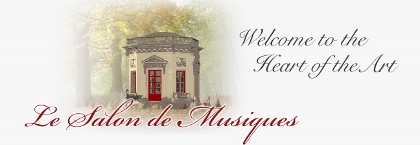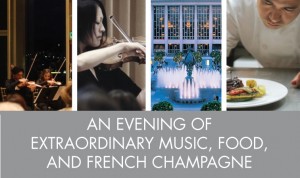GREEN IRELAND, HANDSOME HANSON, AND A BRIDGE TOO FAR
Le Salon de Musiques, the most cultivated, accessible, pleasant, exciting and educational chamber concert outfit in, well, anywhere I have been, opened its fifth season with a concert of its usual riches: contextual insight, perfect performances, rarely heard but astounding selections, hobnobbing, and gourmandizing.
The three pieces chosen by Artistic Director François Chouchan, who scours the repertoire for rarely heard pieces, were by composers who meant their work to communicate and move audiences (versus Schoenberg, who desired to alienate). John Ireland (1879-1962) and Frank Bridge (1879-1941), were both teachers to Benjamin Britten (whose Variations on a Theme of Frank Bridge, Op. 10, is one of my favorite works by the English composer), and they had a similar musical idiom rooted in neo-romanticism. Howard Hanson (1896-1981) was also an educator (and best-known as such), having been handpicked in 1924 by George Eastman (the inventor of Kodak film) to head the University of Rochester’s Eastman School of Music, a post which Hanson held for forty years. All three worked as musicians, so they also meant their work to be performed by them.
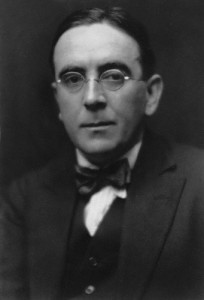 “Think of John Ireland’s Phantasie in A Minor for Piano Trio as an improvisatory interlude,” musicologist Julius Reder-Carlson told us prior to the late afternoon concert. Indeed, this thoroughly pleasant and engaging work was almost like a plate of petit-fours: the tasty bite-sized variations were alternately spicy and sweet, with one which had changing flavors on the palette. Co-Artistic Director and cellist John Walz joined violinist Serena McKinney and pianist Adam Neiman for this musical aperitif.
“Think of John Ireland’s Phantasie in A Minor for Piano Trio as an improvisatory interlude,” musicologist Julius Reder-Carlson told us prior to the late afternoon concert. Indeed, this thoroughly pleasant and engaging work was almost like a plate of petit-fours: the tasty bite-sized variations were alternately spicy and sweet, with one which had changing flavors on the palette. Co-Artistic Director and cellist John Walz joined violinist Serena McKinney and pianist Adam Neiman for this musical aperitif.
It’s actually is a boon for patrons that Le Salon is not a non-profit, and that there are no donors. This means that Chouchan doesn’t have a board of directors telling him what to select, and it’s staggering how many premieres he has offered. The October 12 program was no different, offering yet another jewel: American composer (and Pulitzer Prize-winner) Howard Hanson’s Concerto “Da Camera” in C Minor, Op.7, for Piano & Strings.
Carlson informed us that Hanson devoted his life to creating an American Classical community. During his tenure at Eastman, Hanson presented works by over 700 composers, featuring over 1,500 different compositions. He was a leading force behind the cultivation and dissemination of American music (his annual American Music Festivals became the proving ground for works by such as Samuel Barber, Aaron Copland, and Elliott Carter).
The “Da Camera” is an early work dating from 1917 while Hanson was on the faculty of the College of the Pacific in San Jose, which makes it all the more remarkable that it is just now given its Los Angeles premiere. The Concerto is in one continuous, fantasy-like movement. It opens with a majestic, chordal statement—hot right out of the gate like a torch flaring up by the strings; Neiman, Walz, and McKinney were joined here by violinist Jessica Guideri and the new principal violist of LA Opera, Yi Zhou, who had just arrived from playing a performance of Swan Lake (the ballet, not the opera) downstairs at the Dorothy Chandler Pavilion.
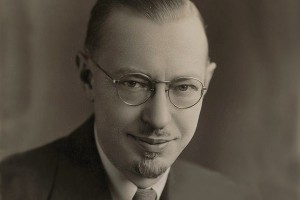 The theme is answered by Neiman’s solo piano in rhythmic, military octaves. Gushing arpeggios, ascending scales, and frequent cadenza-like passages for the piano contribute to the arch-Romantic atmosphere of the work. A pleading motive characterizes the second theme, which evolves into a passionately forceful episode. After more fleeting material, Hanson brings in a third thematic group, typical of large expanded one-movement forms such as this. The piano appears in an improvisatory solo at this point. The development features a fugal passage demanding great virtuosity from both the strings and the keyboard, and watching them up-close at the Salon makes the “bellicose moments” and the “strife” (per Carlson) all the more resonant. At its climax, the second theme reappears, announcing the recapitulation. A grand pause ushers in the calm, quiet coda and the “Da Camera” ends in a mood of repose—“a degree of resolution but not completion,” Carlson noticed.
The theme is answered by Neiman’s solo piano in rhythmic, military octaves. Gushing arpeggios, ascending scales, and frequent cadenza-like passages for the piano contribute to the arch-Romantic atmosphere of the work. A pleading motive characterizes the second theme, which evolves into a passionately forceful episode. After more fleeting material, Hanson brings in a third thematic group, typical of large expanded one-movement forms such as this. The piano appears in an improvisatory solo at this point. The development features a fugal passage demanding great virtuosity from both the strings and the keyboard, and watching them up-close at the Salon makes the “bellicose moments” and the “strife” (per Carlson) all the more resonant. At its climax, the second theme reappears, announcing the recapitulation. A grand pause ushers in the calm, quiet coda and the “Da Camera” ends in a mood of repose—“a degree of resolution but not completion,” Carlson noticed.
After hearing this piece with its wide range of emotion and unabashed virtuosity, I decided to do a bit more studying. It turns out that Hanson valued this Concerto: It was revised in 1922 for a string ensemble, premiering in Rome at the American Academy under the composer’s direction. Later, his Fantasy Variations on a Theme of Youth gave him a chance to recycle the main theme of the Concerto, which the composer recalled with affection, describing it as being “as fresh today as it was when it was written well over thirty years ago.” These artists only had a few rehearsals, but they sounded as though they’ve been playing together for years, and the work is still fresh almost 100 years after being written.
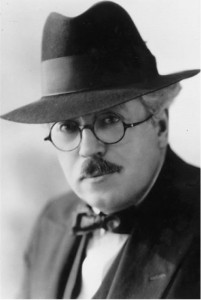 Frank Bridge’s Piano Quintet H. 49 in D Minor is hardly a neglected piece; it is oft-recorded but it is one of the more rarely played pieces from his early oeuvre. And I could see the reason: While it certainly held my interest, this 1912 work—a revision of his D minor Piano Quintet from seven years before—is a Bridge too far. The three-movement work wasn’t nearly as fascinating as the Hanson, and even with its amazing sonorities, stirring Adagio, and playful, romantic Allegro, it felt overly long. After a promising start, the opening movement soon drifted into an ominous routine with progressive lethargy. The centerpiece worked better—a lyrical amalgam of slow movement and scherzo enclosed within one of Bridge’s arch-like fantasy structures. And the finale—while romantic, unsettling, and powerful at times—failed to provide sufficient ballast to counterbalance what had preceded it. But given the musicians—in particular, pianist Adam Neiman—any reservations about the piece were irrelevant on this occasion.
Frank Bridge’s Piano Quintet H. 49 in D Minor is hardly a neglected piece; it is oft-recorded but it is one of the more rarely played pieces from his early oeuvre. And I could see the reason: While it certainly held my interest, this 1912 work—a revision of his D minor Piano Quintet from seven years before—is a Bridge too far. The three-movement work wasn’t nearly as fascinating as the Hanson, and even with its amazing sonorities, stirring Adagio, and playful, romantic Allegro, it felt overly long. After a promising start, the opening movement soon drifted into an ominous routine with progressive lethargy. The centerpiece worked better—a lyrical amalgam of slow movement and scherzo enclosed within one of Bridge’s arch-like fantasy structures. And the finale—while romantic, unsettling, and powerful at times—failed to provide sufficient ballast to counterbalance what had preceded it. But given the musicians—in particular, pianist Adam Neiman—any reservations about the piece were irrelevant on this occasion.
Neiman had a fascinating reciprocity with his fellow players, but he was clearly guiding. He also had a mesmerizing give-and-take relationship with the piano and the sheet music on his iPad. With the look of an actor, Neiman would nod in agreement with a lovely passage or look troubled by the introduction of a melancholic section. His unrestrained passion, expressive physicality, and articulate facial expressions could be heard in his bright playing. With Neiman, you could really sense the romance struggling to emerge from, and eventually triumph over, anarchy.
Guideri, Mc Kinney and Zhou were also sensational, and will appear at the next concert on Nov. 9 with Ben Hong on cello, performing Howells’ Fantasy String Quartet Op. 25, Suk’s Meditation on the Old Czech Chorale “St. Wenceslas” Op. 35a, Janáček’s amazing String Quartet No.1 (Kreutzer Sonata), and Smetana’s String Quartet No.1 in E-minor (From My Life).
The “Masters Rediscovered” season continues on Dec. 7 with two U.S.A. premieres: Gnesin’s Songs for a Knight Errant Op. 28 and Cras’s
Quintet for Harp, Winds & Strings.
Le Salon de Musiques
Season 5, Concert 1 played October 12, 2014
upcoming concerts this year:
Season 5, Concert 2
Sunday, November 9, 2014 at 4:30 (note later start time)
Jessica Guideri & Serena Mc Kinney, violins
Yi Zhou, Viola
Ben Hong Cello
Program:
H. Howells: Fantasy String Quartet Op. 25
J. Suk: Meditation on the Old Czech Chorale “St. Wenceslas” Op. 35a
L. Janáček: String Quartet No.1 Kreutzer Sonata
B. Smetana: String Quartet No.1 in E-minor From My Life
Season 5, Concert 3
Sunday, December 7, 2014 at 4:00
Pamela Vliek-Martchev, flute
Marcia Dickstein, harp
Jessica Guideri & Erik Arvinder, violins
Rob Brophy, viola
John Walz, cello
Program:
M. Ravel: Sonata for Violin & Cello
A. Bax: Fantasy Sonata for Viola & Harp
M. Gnesin: Songs for a Knight Errant Op. 28 (U.S.A. Premiere)
J. Cras: Suite for Flute & Harp
J. Cras: Quintet for Harp, Winds & Strings (U.S.A. Premiere)
